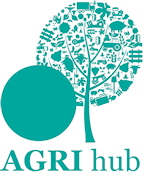Dairy farm profits doubled in the milk year to 2021/22 and are set to continue improving this year – although soaring input costs remain a concern to all producers.
Farm accountant Old Mill unveiled its annual milk cost of production report at the Dairy Show on 5 October. It shows that average comparable farm profits among its clients* increased to £371/cow in the year to 31 March 2022, driven by a combination of slightly firmer milk prices and lower production costs.
“The year ending 31 March 2022 seems a long time ago,” says Dan Heal, rural accountant at Old Mill. “There have been a lot of changes since then, but from these times of market volatility taking a reflective look at business performance has never been more critical.”
Milk income in 2021/22 increased by £80/cow, year-on-year, with modest price increases offset by lower yields, driven by a desire to reduce production costs. “Good forage growing conditions meant a plentiful supply of high quality forage, leading to lower concentrate feed rates,” says Mr Heal. “The grazing season lasted well into the autumn, shortening the winter housing period. As a result, variable costs related to labour, bedding, power and machinery all fell.”
Even so, there remained a marked difference between the top and bottom 10% of producers, with the gap widening by £137 to £1,234/cow. Of this, £541 related to income; although top 10% yields were 1,334 litres/cow lower, income was higher. This shows that meeting buyer requirements reaps rewards, as does reducing concentrate usage when marginal litres are uneconomic, explains Mr Heal.
Production costs were £693/cow lower among the top 10%, mainly attributed to feed, labour, power and machinery. “There is a high focus on efficiency for the top 10% of herds. In contrast, more work is being done in a less efficient manner among the bottom 10%, which is not generating a return.” However, much of this could be attributed to less efficient setups, likely requiring investment to change.
Although the top 10% of herds were larger, at 287 cows versus 188 cows, there were a variety of systems and calving patterns in both groups, showing that efficiency relies on the farmer not the system, he adds.
Last year, milk prices averaged 33.8p/litre, most fertiliser was bought at sub £300/t and electricity contracts were in the 20p/unit range. A lot has changed since then, so what does that mean for margins in the coming year? On the face of it, milk prices at 50p/litre indicate a marked improvement in margins, but at the same time fertiliser is nearing £800/t and electricity is around 65p/unit.
“Inflation has hit the dairy sector hard over the last six months, especially as milk supply is finely balanced,” says Mr Heal. These rising costs and strong cull cow prices have led to more cows exiting the herd; the average herd size fell from 269 in 2020/21 to 250 last year and a forecast 235 in 2022/23. Average feed costs are predicted to increase by £46/cow as prices rise and concentrates are fed to replace forage shortfalls.
“Cost increases are steadily coming through as fixed contracts for energy, feed and fertiliser come to an end, but the full effect will not be seen until the 2023/24 year.” Combined with higher fertiliser prices, the overall cost of production is set to jump by £259/cow to £2,559/cow this year.
However, milk income is set to increase by £791/cow to £3,102 due to higher milk prices, despite a forecast drop in yield to 6,600 litres as the summer drought impacted both milk and forage production. Non-milk income is expected to fall marginally to £350/cow as calf prices ease, leaving a comparable farm profit of £893/cow.
“This is the fourth year in a row that average profits in excess of £100/cow have been achieved,” says Mr Heal. “Now is time to focus on building balance sheets to make up for the lean years and build future resilience. This is particularly relevant with the cost increases that are around the corner.”
According to Annabel Hole, rural administrator at the Farm Consultancy Group, producers need to budget for future capital investment in water quality and slurry storage improvements to meet new legislation. They should also prepare for higher tax bills given the larger profits made and beware the impact of rising interest rates on loan repayments, she adds.
“The old adage of ‘cash is king’ has never been more accurate, with working capital requirements testing any business,” says Mr Heal. “Challenge creates opportunity – there is the potential for good profits to be made, but the focus needs to be on efficiency to maximise these and secure the business for the future.”
*The sample consists of Old Mill and Farm Consultancy Group clients who derive their income mainly or solely from milk sales, across a variety of farming systems. All farms have a 31 March year end. To make the businesses comparable, rents, interest payments, drawings, tax, Basic Payment Scheme income and capital expenditure have been excluded. Depreciation is included, as is a labour charge of £30,000 per full-time partner/director.
- For more information contact Dan Heal on 07970 890772 or visit the Old Mill stand at the Dairy Show.
About Old Mill
Old Mill Accountants and Financial Planners employ over 300 staff in four West Country locations. The Rural Services teams are headed by Andrew Vickery, with offices in Yeovil, Wells, Exeter and Melksham. Looking after over 1,200 farmers they are one of the leading specialist farm accountants, and are happy to help with any financial and tax-related enquiries from the media.
For more information contact:
Ben Carter, Rural Business Development Manager. Tel: 07825 620052 or e-mail: [email protected]




